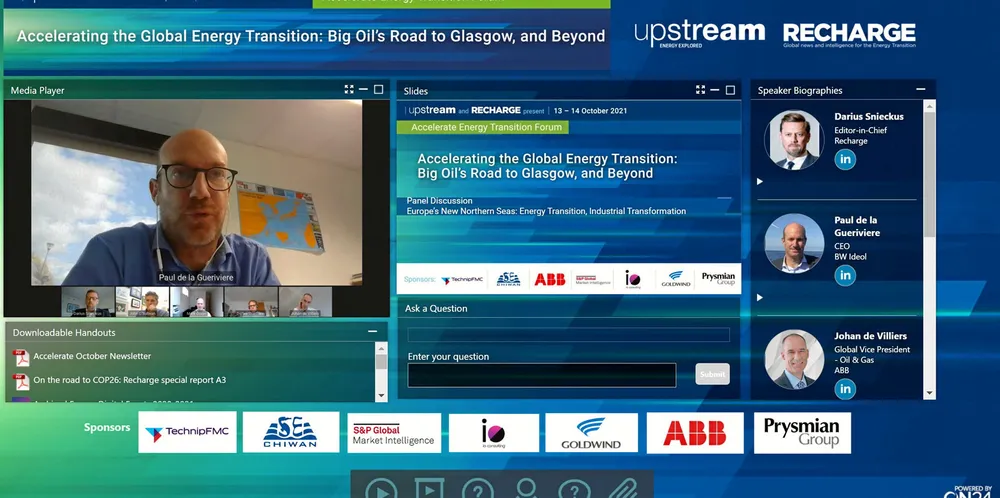Skills, steel and data-sets: 'The death of North Sea oil will serve the birth of new energy'
Recharge roundtable told valuable legacies from fading fossil sector can help speed transition to renewables and hydrogen in one of the world's largest energy basins

“Offshore wind – and in particular, floating wind – is going to have to become something of a ‘Swiss army knife’ in this,” he said, “not only churning out electricity to flow through a massive meshed offshore grid, but also playing handmaiden to highly ambitious offshore oil operation emissions reduction plans, and serving to power thousands of electrolysers that will generate huge volumes of green hydrogen, to decarbonise coastal industry, refuel green shipping vessels, and help feed a global commoditised market for the new-age gas in the years to come.”
“This is probably an excellent illustration... of the circular economy. The end of life of the oil & gas industry will serve the birth of the new floating wind [sector].”
'Fantastic opportunity for oil & gas repositioning'
John O’Sullivan, chief operations officer of dCarbonX, which aims to develop large-scale subsurface hydrogen storage facilities off the UK and Ireland, said the region has “all the ingredients for a geological system that can facilitate the balancing of intermittency” in future energy systems, aided by the legacy of the outgoing fossil sector.
“This is a fantastic opportunity for repositioning and retooling oil & gas expertise around storage,” Sullivan told the roundtable, adding that the fossil sector has a chance to “repurpose its mindset and philosophy”.
He pointed to the geophysical data, “tens of billions of dollars of data required by the oil & gas industry… now available to be reused and repurposed for the energy transition”.
Johan de Villiers, global vice president of the oil & gas division of technology and engineering giant ABB, said clean generation sectors such as offshore wind were already tapping innovations used to enable huge hydrocarbons projects.
“Whether you’re trying to decarbonise an offshore platform by removing a gas turbine or evacuate a large amount of power from an offshore substation that connects a wind farm, [there are] essentially similar technologies and similar skills that you need.”
De Villiers said advances in technology are transforming the way renewable and fossil-based projects alike are designed an executed. He cited examples of the shift to un-crewed assets, and simulation technology that means you can “test and commission software and automation systems before you even procure the hardware”.
'Closer integration essential'
Another major player in power technology, cable group Prysmian, told the roundtable it too was evolving its capabilities to meet the fast expanding requirements of sectors such as floating wind, and the wider need to link nations and even continents.
For the cable industry that means gearing up for the “complexity and opportunity” of hugely ambitious projects seeking to link Europe with low-cost African solar, and for the longer cables further from shore needed for floating wind.
“There are many segments of this energy transition that are starting to come to the fore,” Dixon said.
“Coastal communities can have plentiful green energy where now there might not be much energy at all.”